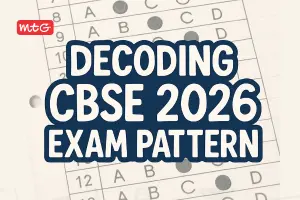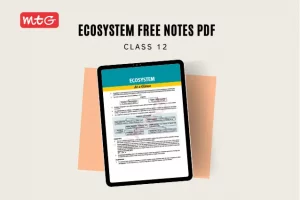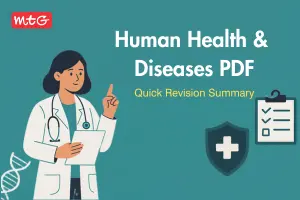Organisms and Populations Class 12 Biology MCQ with Answers has been organized according to the latest exam pattern in the CBSE Class 12 Biology syllabus for the upcoming CBSE Class 12 Biology Exam. Organisms and Populations cover topics like population attributes and population growth, population interactions, These questions are designed to help students understand the concept thoroughly. They are helpful for revision and for grasping the concepts effectively. These MCQ questions cover in-text book questions and important topics to help students assess their preparation level for CBSE board exams.
Recent – Biotechnology : Principles and Processes Class 12 Biology MCQ With Solutions
CBSE Class 12 Chapter 11 Organisms and Populations MCQs
Check below the MCQ Questions for class 12 Biology with answers and Clear your idea of Chapter 11 Organisms and Populations.
Q.1. Select the incorrect match.
(a) Euryhaline- Salmon
(b) Stenohaline- Shark
(c) Stenothermal- Picea
(d) Eurythermal- Abies
Answer
Check Out – 11 Most Important Graphics of NCERT Class 12th Biology That You Cannot Miss
Q.2. A biologist studied the population of mice in a particular area. He found that the average natality was 500, average mortality 480, immigration 40 and emigration 60. The net increase in population is
(a) 10 (b) 30
(c) 0 (d) 20
Answer
Natality + Immigration= 500 +40 = 540
The population decline is
Mortality + Emigration = 480 + 60 = 540
Thus, net increase in population = 540 – 540 = 0
Practice More – CBSE Sample Paper Class 12 for 2023-24 Boards | FREE PDF from MTG
Q.3. The value of (r) for flour beetle is
(a) 0.015 (b) 0.12
(c) 0.5 (d) 0.081.
Answer
(b)
Q.4. A protozoan reproduces by binary fission. What will be the number of protozoans in its population after four generations?
(a) 16 (b) 32
(c) 64 (d) 8
Answer
Q.5. Select the type of biotic interactions with example, in which one of the interacting species is benefited while other remains unaffected.
(a) Commensalism- Epiphyte on mango branch
(b) Mutualism- Orchid Ophrys and bee
(c) Amensalism- Balanus and Chthamalus
(d) Parasitism – Ticks on dogs
Answer
Q.6. Which of the following is the correct example of positive interaction in a population?
(a) Adamsia – Hermit crab
(b) Plasmodium – Mosquito
(c) Sacculina – Crab
(d) Wuchereria – Man
Answer
Q.7. Which of the following shows Verhulst-Pearl logistic growth?
(a) dN/dt= rN (K-N)/K
(b) dN/dt= rN
(c) Nt= N0ert
(d) rN K-N/K
Answer
dN/dt = rn(K – N/K)Where N is population density at time t , r intrinsic rate of natural increase and K is carrying capacity.
Q.8. In which of the following types of interactions both the interacting organisms are harmed?
(a) Parasitism (b) Protocooperation
(c) Mutualism (d) Competition
Answer
Q.9. In the exponential growth equation Nt = N0ert, e represents
(a) the base of geometric logarithms
(b) the base of number logarithms
(c) the base of exponential logarithms
(d) the base of natural logarithms.
Answer
Q.10. Inspite of interspecific competition in nature, which mechanism the competing species might have evolved for their survival?
(a) Predation
(b) Resource partitioning
(c) Competitive release
(d) Mutualism
Answer
We hope the MCQs for the CBSE Class 12 Biology Chapter 11 on Organisms and Populations are helpful for your board exam preparation.
Keep learning and stay updated with us for more CBSE exam updates.






























